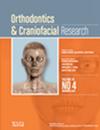Three-Dimensional Evaluation of Changes in the Nose and Upper Lip After Secondary Alveolar Bone Grafting in Patients With Unilateral Cleft Lip and Palate
Abstract
Introduction
Alveolar bone grafting (ABG) influences facial soft tissue changes, but the precise effects on the nose and upper lip remain unclear. This study used three-dimensional (3D) facial images to evaluate nose and upper lip alterations after ABG. We further enhanced the visualisation of these changes by generating 3D superimpositions, colour maps and deviation analyses of key critical landmarks in these regions.
Materials and Methods
Forty patients (8–20 years old) with non-syndromic unilateral cleft lip and cleft palate (UCLP) underwent ABG using the iliac bone from September 2022 to September 2023. Three-dimensional facial images were analysed 1 month before and 3 months after surgery to evaluate the spatial displacement of 18 nose and upper lip landmarks to assess changes after ABG. Colour maps were constructed, and 3D deviation analysis was also performed. Paired sample t tests and Wilcoxon's signed-rank tests were used to analyse alterations.
Results
The 3D analysis uncovered significant forward movement on the cleft side only. This included nasal alar, alar curvature and subalar points. The labrale superius of the upper lip showed similar movement. Conversely, other landmarks showed minimal changes in all directions.
Conclusions
ABG can improve the nasal contour on the cleft side. After ABG, significant forward movement occurs in the cleft side of the nasal alar, alar curvature and subalar regions. Although these changes are minimal, they contribute to the overall improvement in facial aesthetics.

 求助内容:
求助内容: 应助结果提醒方式:
应助结果提醒方式:


